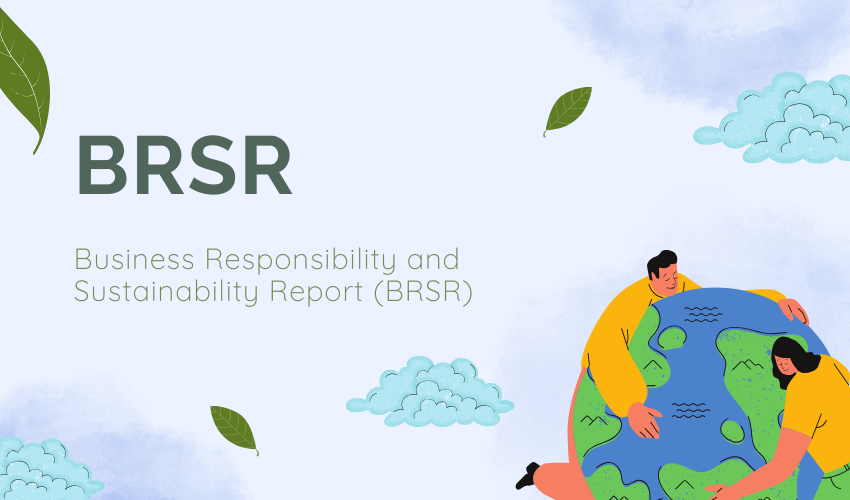In the evolving realm of corporate sustainability, transparency and accountability are key. To address this need, India’s Business Responsibility and Sustainability Reporting (BRSR) framework offers various reporting formats catering to diverse company sizes and complexities. This system allows companies to communicate their environmental, social, and governance (ESG) efforts through different levels of detail, ensuring inclusivity and accessibility while upholding transparency.
Understanding BRSR Reporting Formats
BRSR has three key formats: BRSR Comprehensive, BRSR Lite, and BRSR Core. Each format is designed for specific types of companies and reporting needs. Below is a detailed comparison of these formats.

BRSR Comprehensive
The BRSR Comprehensive is designed primarily for large, listed companies, particularly the top 1000 based on market capitalization. It encompasses a comprehensive set of reporting requirements covering various environmental, social, and governance (ESG) aspects.
These include detailed disclosures on environmental resource management, emissions, biodiversity, climate change mitigation and adaptation, as well as social aspects like employee well-being, community engagement, human rights, and governance factors such as board diversity, ethics, anti-corruption measures, and risk management.
Mandatory reasonable assurance on BRSR Core disclosures (environmental, social, and governance core disclosures) is required, starting from the financial year 2023-24.
BRSR Lite
BRSR Lite targets smaller companies, including unlisted entities, aiming to make sustainability reporting more accessible. It offers a simplified and condensed reporting format compared to the Comprehensive version.
BRSR Lite focuses on key ESG areas relevant to the company’s size and industry, such as identifying material ESG aspects, responsible sourcing practices within the supply chain, and stakeholder engagement.
Assurance on BRSR Lite reports is voluntary, with companies having the option to obtain assurance in either limited or reasonable assurance form.
BRSR Core
BRSR Core serves as a focused subset of the BRSR Comprehensive framework, intended for larger companies transitioning towards comprehensive reporting.
Meaning that BRSR Core is a part of BRSR Comprehensive Framework.
It includes a limited set of mandatory disclosures related to core environmental, social, and governance aspects. This serves as a foundational step for larger companies as they progress towards full BRSR Comprehensive reporting.
Similar to the Comprehensive format, mandatory reasonable assurance is required for BRSR Core disclosures starting from the financial year 2023-24 for the top 150 companies based on net worth.
Comparing BRSR Lite vs. BRSR Comprehensive Reporting
Both BRSR Lite and BRSR Comprehensive formats aim to capture a company’s environmental, social, and governance (ESG) performance. However, they cater to different company sizes and ESG reporting experience levels, resulting in varying reporting requirements. Let’s delve into the specifics:
| Parameter | 📌 BRSR Lite | 📌 BRSR Comprehensive |
|---|---|---|
📌 Scope and Applicability | ✔️ Applicable to: Unlisted companies and smaller listed companies not in the top 1000 by market capitalization. 📌 BRSR Lite: Covers core ESG aspects, focusing on the top 3 products/services with significant sustainability impact. | ✔️ Applicable to: Top 1000 listed companies by market capitalization (as of FY 2022-23).
✔️ Mandatory: Promotes transparency and accountability for larger companies’ ESG performance. ✔️ Broader Scope: Covers a wider range of ESG aspects and requires reporting on all products/services constituting 90% of turnover. |
📊 Reporting Depth and Granularity | ✔️ Qualitative Focus: Allows qualitative narratives and less comprehensive data for disclosures.
✔️ No GRI Mapping: Doesn’t require mapping disclosures to specific GRI Standards. | ✔️ Quantitative Data: Demands in-depth analysis and quantitative data for each disclosure.
|
🛡️ Assurance Requirements | ✔️ Currently Voluntary: Assurance is not mandatory but may become so in the future. ✔️ Optional Option: Companies can choose to get voluntary assurance for enhanced stakeholder confidence. | ✔️ Mandatory: Requires independent assurance
|
🌍 Specific Reporting Areas | ✔️ Simpler Disclosures: Has simpler disclosure requirements on aspects like climate change, human rights, etc.
✔️ Focus on Core Areas: Emphasizes essential ESG aspects to initiate sustainability reporting practices. | ✔️ Detailed Disclosures: Requires detailed disclosures on greenhouse gas emissions, climate change risks, value chain sustainability, human rights due diligence, etc.
✔️ Comprehensive Approach: Aims for a more holistic picture of the company’s ESG impact. |
📑 Format Structure | ✔️ Simpler Format: Uses a basic structure with fewer sections and disclosures.
| ✔️ Detailed Format: Has a more elaborate structure with numerous sections and specific disclosure requirements. ✔️ Comprehensive Coverage: Ensures comprehensive reporting on various ESG aspects. |
🛠️ Availability of Resources | ✔️ Limited Resources: May have fewer official resources and guidance available compared to BRSR Comprehensive. ✔️ Independent Effort: Companies might need to rely more on external resources and guidance. | ✔️ Extensive Resources: Has extensive official resources, including detailed guidelines, FAQs, and training materials.
|
The choice between BRSR Lite and BRSR Comprehensive depends on your company’s size, listing status, ESG maturity, and reporting resources. Consider your capacity for detailed analysis, data collection, and assurance before deciding. For unlisted companies or smaller listed entities, BRSR Lite offers a manageable starting point, while larger listed companies must adhere to the more comprehensive BRSR format.
Related Resources
About the Author

CA Bhuvnesh Kumar Goyal
Fellow Chartered Accountant, LLB, B.com, Forensic Accountant and Fraud Detection Professional
CA Bhunvesh Kumar Goyal, a seasoned Chartered Accountant with 15+ years of experience, specializes in Income Tax, GST, MSME advisory, startups, audits, company registration, and business structuring. He also provides expert guidance on ESG, BRSR, the Companies Act, crypto transactions, and transfer pricing. With a practical approach, he helps businesses stay compliant while optimizing financial and operational efficiency.